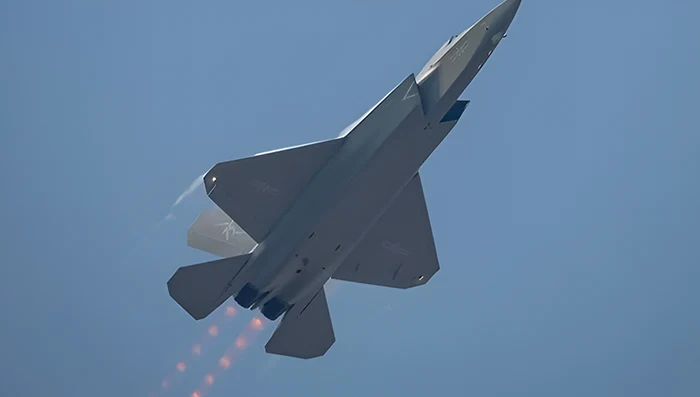China Deploys DeepSeek AI to Redefine Advanced Warplane Development

By leveraging DeepSeek AI to redefine advanced warplane development, China is accelerating its aerospace ambitions with smarter, faster, and more autonomous fighter jet capabilities. Defense analysts say this marks a major technological leap that could reshape the global balance of airpower.
In a move that could redefine the global balance of military technology, China has begun deploying its homegrown artificial intelligence platform, DeepSeek, to design and develop its next generation of advanced warplanes. This strategic integration of AI into aerospace engineering marks a significant leap for the nation’s defense industry, signaling both technological independence and a new era of rapid innovation.
DeepSeek: The Engine of China’s AI Ambitions

DeepSeek, developed by a Hangzhou-based startup, has quickly emerged as a formidable player in the global Artificial Intelligence landscape. The company’s large language models (LLMs) are already being compared to Western counterparts like OpenAI’s GPT-4o, Google’s Gemini, and Anthropic’s Claude, with DeepSeek’s latest R2 model reportedly operating at a fraction of the cost-up to 97.3% cheaper than GPT-4o, thanks to its hybrid mixture-of-experts (MoE) architecture. This cost efficiency, combined with robust performance, has made DeepSeek an attractive tool for both commercial and military applications.
Shenyang Aircraft Design Institute: A Legacy Meets the Future
The integration of DeepSeek into warplane development is spearheaded by the Shenyang Aircraft Design Institute, a subsidiary of the state-run Aviation Industry Corporation of China (AVIC). The institute, under the leadership of veteran engineer Wang Yongqing, has a storied history, having designed iconic aircraft such as the J-15 Flying Shark and the stealthy J-35 fighter.
Wang, who has devoted nearly four decades to the institute, confirmed that his team is now leveraging DeepSeek’s AI capabilities to tackle the complex challenges of modern warplane design. “The technology has already shown promising potential for application, providing new ideas and approaches for future aerospace research and development,” Wang stated in a recent interview.
How DeepSeek AI Redefines Advanced Warplane Development?
Unlike traditional simulation software, DeepSeek’s AI models act as dynamic research assistants. This isn’t just about software; using DeepSeek AI to redefine advanced warplane development is transforming how engineers approach design, material selection, and even cockpit interfaces.
Researchers can ingest and analyze vast volumes of technical documents, historical test data, and vendor specifications, identifying patterns and correlations that might elude even the most experienced engineers. This enables the design team to:
- Automate the review of technical papers and legacy research, freeing up human experts to focus on validation, prototyping, and hands-on testing.
- Generate novel hypotheses and suggest unconventional design pathways, including new aerodynamic shapes, stealth geometries, and materials selection.
- Model mission scenarios and optimize configurations for multi-role fighters, such as weapons bay arrangements, sensor placements, and structural reinforcements for carrier-based operations.
Early simulations based on AI-generated profiles have already demonstrated improvements in lift-to-drag ratios and structural resilience, accelerating the transition from digital concept to wind tunnel testing.
Accelerating Innovation and Reducing Costs
The use of DeepSeek is not only about technical advancement- it’s also about efficiency. By automating time-consuming review and analysis tasks, DeepSeek allows China’s engineers to iterate faster and devote more energy to creative problem-solving. This acceleration could compress research and development timelines by months, if not years, giving China a potential edge in the global race for air superiority.
Moreover, DeepSeek’s domestic origins mean that China is less reliant on Western AI technologies, a crucial advantage given ongoing geopolitical tensions and tech export restrictions.
Next-Generation Projects: J-35, J-36, and Beyond
The immediate beneficiaries of this AI-driven approach are the J-35 stealth fighter and its upcoming variants. Engineers are already exploring new design concepts for future platforms-informally dubbed the J-36 and J-50-that promise adaptive-cycle engines, integrated sensor networks, and enhanced cooling systems for directed-energy weapons.
DeepSeek’s AI is also being used to conceptualize novel engine inlets and heat dissipation mechanisms, correlating real-world test data with AI-driven models to optimize performance in real time.
Training the Next Wave of Aerospace Talent
Recognizing the transformative potential of AI, the Shenyang Institute is revamping its talent development strategy. Young engineers are being trained in both aeronautics and data science, learning to use AI tools like DeepSeek alongside traditional engineering methods. This approach ensures that the next generation of designers can seamlessly bridge the gap between human expertise and computational creativity.
A Broader Shift in Global Military Innovation
China’s adoption of DeepSeek in warplane development is part of a wider trend: the convergence of digital ecosystems and physical engineering in military technology. As AI becomes more deeply integrated into the design and operation of advanced weaponry, the boundaries between software and hardware are blurring.
This trend raises important questions about the future of global defense competition. With AI accelerating innovation and reducing costs, nations that master these tools may gain a decisive edge in both the speed and sophistication of their military platforms.
Conclusion: The Dawn of AI-Driven Airpower
As China’s Shenyang Aircraft Design Institute pushes forward with DeepSeek at the heart of its research and development efforts, the country is positioning itself at the forefront of a new era in military aviation. The integration of advanced AI is not replacing human expertise but augmenting it-enabling engineers to revisit legacy designs with fresh perspectives and to pioneer innovations that may define the next generation of air combat.
With multiple fighter programs advancing in parallel, and AI-driven insights guiding every critical decision, China’s air combat capabilities are poised for a leap that could reshape the future of aerial warfare. The world will be watching closely as this fusion of artificial intelligence and aerospace engineering unfolds.
Stay tuned to awesmai.com for the latest updates!







